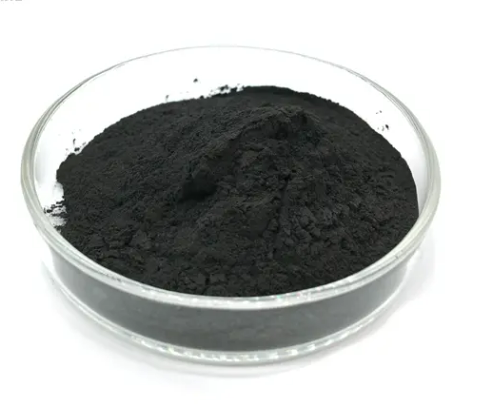Ruthenium on activated charcoal (Ruthenium /alumina catalyst)
Ruthenium/alumina (Ru/Al₂O₃) catalysts feature highly dispersed ruthenium nanoparticles on an alumina support, delivering exceptional catalytic activity and thermal stability. These catalysts are essential for industrial processes like ammonia synthesis (Haber-Bosch), hydrogenation reactions, and Fischer-Tropsch fuel production. The alumina substrate enhances metal dispersion, prevents sintering, and ensures long-term durability under high-temperature/pressure conditions. With their cost-efficiency and versatility, Ru/Al₂O₃ catalysts are increasingly adopted in clean energy applications, including CO₂ conversion and fuel cell technologies.
Material | Alumina-supported ruthenium catalyst, Ru/Al2O3 Catalyst |
Carrier/Support | Alumina, Al2O3 |
Crystal form of the carrier | α, γ, δ |
Appearance | Black powder |
| Ru content | 0.1% ~ 30% |
CAS Number | 7440-05-3 |

Description of Ruthenium/Alumina Catalyst
Ruthenium/Alumina Catalyst (Common Name: Ru-Al2O3 Catalyst, English: Ruthenium/Alumina Catalyst, Ru/Al₂O₃) is a highly efficient catalyst featuring nano-sized ruthenium particles supported on high-surface-area alumina (typically 1-10wt% Ru loading, BET surface area 150-300m²/g). This heterogeneous catalyst is widely used in industrial applications including ammonia synthesis (Haber-Bosch process), petroleum hydrogenation refining, and Fischer-Tropsch synthesis, demonstrating exceptional performance under harsh reaction conditions. Key technical parameters include Ru dispersion (>50%), particle size (2-5nm), and sintering resistance temperature (<600°C). Compared to precious metal catalysts, Ru/Al₂O₃ offers significant cost advantages, serving as an economical alternative to platinum-group catalysts in chemical processes.
Main properties of Ruthenium/Alumina Catalyst
Name: Ruthenium /alumina catalyst, ruthenium on activated charcoal
CAS No.:7440-05-3
Specifications: Ru 101, Ru 103, Ru 105, Ru 107, Ru 110
Ruthenium content: 0.1% ~ 30%
Carrier material: alumina
Crystal form of the carrier: α, γ, δ
Carrier type: dental bulb, ball, column, size of 1.5-5mm
Specific surface area (m2/g): 95-350
Pore volume (ml/g): 0.45-1.0
Aperture (nm): 5-35
Bulk density (ml/g): 0.42-0.90
Compression strength (N): 15-90
Application of Al2O3-supported Ru nanoparticles
Ammonia synthesis catalyst (Haber-Bosch process)
Hydrogenation reactions (e.g., benzene to cyclohexane)
Fischer-Tropsch synthesis (fuel production)
Methanation (CO/CO₂ to methane)
Catalytic converters (emission control)
Petrochemical refining
Ru–alumina nano catalyst Powder Scholar Articles
Synthesis and characterization of Ru/Al2O3 nanocatalyst for ammonia synthesis
Abstract: Ru/Al2O3 catalysts were prepared by conventional incipient wetness impregnation as well as colloid deposition of RuCl3 precursor via in situ reduction with ethylene glycol (polyol) method on alumina support. The samples were characterized by TEM, XRD and TPR techniques.The catalytic performance tests were carried out in a fixed-bed micro-reactor under different operating conditions.
